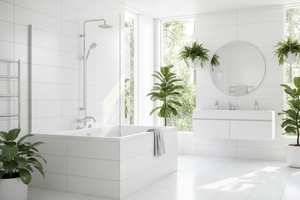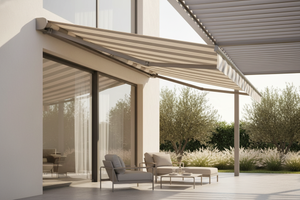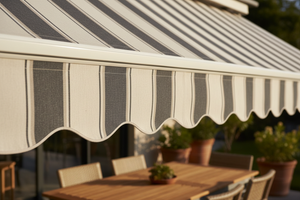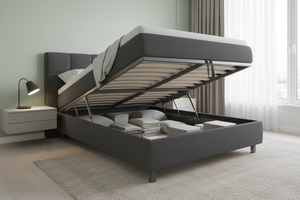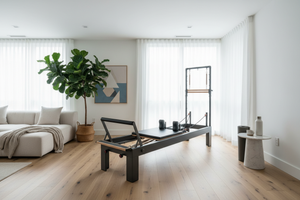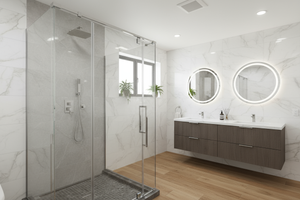Electric Awning vs. Manual Awnings: Making the Right Choice for Your Outdoor Space

Introduction: Unveiling the World of Outdoor Shade Solutions
An inviting outdoor space—a patio, deck, or backyard—is more than just an extension of your home; it’s a sanctuary for relaxation, entertainment, and making memories. A key element in creating this perfect retreat is effective shade. Retractable awnings offer a versatile solution, providing sun protection on demand while preserving open skies when desired. Homeowners are faced with a fundamental choice: the classic reliability of a manual awning or the modern convenience of an electric one.
For those considering electric options, the electric awning range includes various models with different features, sizes, and styles to suit a wide range of residential and commercial needs.
With a variety of options available, the 5.0m x 3.0m retractable folding arm awning is a popular choice for those seeking a heavy-duty, full cassette motorised solution that combines durability and style; you can explore this model further here.
Enhancing Your Outdoor Living Space: The Role of Awnings
Awnings do more than just provide shade. They protect your outdoor furniture from fading, reduce heat gain inside your home, and define your outdoor living area, making it more comfortable and usable throughout the day. Adjusting the awning's pitch or projection can also offer additional privacy for patios or decks, helping to create a more secluded and enjoyable outdoor space. By blocking direct sunlight, they can significantly lower temperatures on your patio and inside your home, potentially leading to energy savings. This choice between manual and electric operation will directly impact how you interact with and benefit from your investment.
The Core Dilemma: Manual Convenience vs. Electric Innovation
The decision hinges on a trade-off between simplicity and sophistication. Manual awnings with manual operation offer a straightforward, cost-effective solution that has served homeowners for decades. Electric, or motorized awnings, represent a leap forward in technology, prioritizing ease of use and automation. Understanding the mechanics, benefits, and considerations of each type is the first step toward making an informed choice that aligns perfectly with your lifestyle, budget, and home.
Exploring the Types of Awnings: Beyond Manual and Electric
When it comes to transforming your outdoor space, the world of awnings offers far more than just a choice between manual and electric operation. Today’s awning systems are designed to suit a wide variety of needs, architectural styles, and outdoor living preferences, ensuring there’s a perfect solution for every home or commercial space.
Retractable awnings are among the most popular choices for homeowners seeking flexibility and control. These awnings can be extended or retracted as needed, allowing you to provide shade during the hottest parts of the day and enjoy open skies when the sun sets. Whether operated manually or with a motorised mechanism, retractable awnings are ideal for patios, decks, and balconies where adaptable shade is a must. Their ability to retract fully means your outdoor area remains uncluttered and open when the awning is not in use, preserving your view and the aesthetic of your home’s exterior.
Folding arm awnings take versatility to the next level. Featuring articulated arms that extend and retract smoothly, these awnings are perfect for creating large, unobstructed shaded areas without the need for posts or supports. This makes folding arm awnings an excellent choice for entertaining, dining, or relaxing outdoors, as they maximise usable space and provide a premium appearance. Available in both manual and electric models, folding arm awnings can be tailored to suit various weather conditions and specific requirements, making them a favourite for both residential and commercial applications.
Beyond these, there are other types of awnings to consider. Fixed awnings offer permanent shade and weather protection for windows and doors, while window awnings can help reduce heat gain and protect interiors from the harsh Australian sun. For larger commercial spaces, robust awning systems are available to provide full protection and enhance the energy efficiency of cafés, restaurants, and storefronts.
No matter which style you choose, today’s awnings come in a wide range of colours, fabrics, and hardware options, allowing you to match your awning to your home’s exterior and personal taste. By exploring the full range of awning types, you can find the ideal solution to enhance your outdoor living, provide shade, and create a comfortable, stylish retreat year round.
Manual Awnings: The Classic, Reliable Choice for Your Home
Manual awnings are the traditional, time-tested option for adding retractable shade to an outdoor space. The projection of a manual awning determines how much shade it provides and can be selected to suit the size of your outdoor area. Praised for their simplicity and durability, they rely on a direct, hands-on approach to operation, offering dependable performance without the need for electricity or complex components.
Finally, consider the overall look. Both manual and electric retractable awnings offer hundreds of fabric choices to perfect your home’s curb appeal. Choosing a high-quality awning fabric is essential for durability, UV resistance, and aesthetic appeal, ensuring your awning withstands the elements and enhances your exterior. The decision here may come down to the clean, modern look of a motorized system versus the classic functionality of a manual crank. This choice ensures your new awning not only performs perfectly but also beautifully complements your home. For those interested in exploring a high-quality motorised option, check out this Motorised Outdoor Folding Arm Awning Retractable Sunshade Canopy in Grey, 4.0m x 2.5m to see a great example of convenience and style combined.
How They Operate: The Simplicity of the Hand Crank Mechanism
The heart of a manual awning is its hand crank mechanism. A long, detachable wand, known as a crank, is hooked into a gear box on the side of the awning. The awning is typically mounted to the wall or roof, ensuring stability and ease of operation when using the crank mechanism. By turning the crank, the homeowner manually rotates the gears, which in turn extends or retracts the awning arms and fabric. The process is entirely mechanical, requiring physical effort but providing direct control over the awning’s position.
Advantages of Going Manual for Your Outdoor Space
The primary appeal of manual awnings lies in their straightforward design.
-
Cost-Effectiveness: They are significantly less expensive upfront than their motorized counterparts, making them an excellent choice for homeowners on a strict budget.
-
Reliability: With fewer moving parts and no electrical components, there is less that can go wrong. They are not susceptible to power outages, motor failures, or sensor malfunctions.
-
Low Maintenance: Maintenance is typically limited to keeping the fabric clean and occasionally lubricating the moving parts of the frame and gearbox. High-quality fabric and hardware require minimal upkeep, further contributing to the awning's longevity.
Considerations and Potential Drawbacks of Manual Awnings
While reliable, manual awnings have limitations. The operation requires a degree of physical effort, which can be a challenge for some individuals, especially with larger or heavier awnings. Extending and retracting the awning is also a slower process compared to electric models. This can sometimes discourage frequent use, meaning homeowners might not get the full benefit of their shade solution if they find the process too cumbersome for quick adjustments.
Who Manual Awnings Are Best For: Lifestyle and Budget Considerations
Manual awnings are an ideal fit for homeowners who prioritize budget and simplicity. While most common in residential settings, manual awnings can also be used in certain commercial applications where simplicity is preferred, making them suitable for both residential or commercial environments. They are perfectly suited for smaller patios or decks where the awning size is manageable. If you plan to use your awning occasionally or don’t mind the few minutes of physical effort required for operation, a manual model provides excellent value and reliable shade for your home.
Electric (Motorized) Awnings: Embracing Modern Convenience and Automation
Electric awnings take the functionality of a retractable shade solution and elevate it with effortless, automated operation. By integrating a motor into the core design, these models eliminate manual labor and introduce a new level of convenience and smart technology to your outdoor space. Motorised awnings are a popular choice for those seeking advanced outdoor awnings solutions, offering modern features and versatility for a wide range of outdoor settings.
The Mechanics of Motorized Operation: Electric Motors and Power Sources
At the core of an electric awning is a tubular motor housed discreetly within the fabric roller tube. This electric motor is powered by a connection to your home’s electrical system, typically hardwired by a professional. Electric awnings are usually mounted to the wall, creating a sleek, integrated appearance and ensuring stability. When activated, the motor provides the torque needed to smoothly and quietly extend or retract the awning arms, a process that takes only seconds.
Advanced Features and Smart Integration for Your Outdoor Living
The true power of motorized awnings lies in their advanced control options. Most models come standard with a handheld remote control, allowing you to operate the awning from anywhere in your yard. Many can also be integrated into smart home systems, enabling control via a smartphone app or voice commands. Furthermore, you can add intelligent sensors for complete automation. Some models feature a combined sun and wind sensor, which can automatically extend the awning when it gets too bright and retract it to prevent damage in gusty weather conditions. Wind sensors are also available as standalone or integrated options, providing additional flexibility. Optional LED lighting can be incorporated into electric awnings to enhance nighttime usability and ambiance. These sensors not only provide peace of mind but also contribute to the security of your outdoor space by automatically responding to changing weather conditions.
Key Benefits of Electric Awnings for Enhanced User Experience
The most significant benefit is unparalleled convenience. The ability to extend or retract your shade with the push of a button encourages more frequent use, maximizing your investment and enjoyment of your outdoor space. High-quality electric awnings are designed to withstand various weather conditions, such as high winds, UV exposure, and temperature fluctuations, ensuring long-term performance and reliability. This ease of use is particularly beneficial for larger awnings that would be physically demanding to operate manually. The integration of sensors provides peace of mind, protecting the awning even when you’re not home.
Potential Drawbacks and Considerations for Motorized Awnings
The primary drawback of electric awnings is the higher cost. The motor, remote control, and optional sensors add a significant expense to the initial purchase. They also require a power source, which can complicate installation. While generally reliable, the motorized components introduce a potential for technical issues or repairs that are more complex and costly than those for a manual crank system.
Who Electric Awnings Are Best For: Lifestyle and Technology Preferences
Electric awnings are best for homeowners who place a high value on convenience, ease of use, and modern technology. The electric awning range includes models suitable for a wide variety of outdoor spaces and user preferences. They are an excellent choice for those with large outdoor spaces, individuals with mobility limitations, or anyone who wants to integrate their awning into a smart home ecosystem. If your budget allows, a motorized awning offers a superior user experience that makes managing your outdoor shade effortless.
A Side-by-Side Comparison: Manual vs. Electric Awnings
Choosing the right retractable awning requires a direct comparison of the factors that matter most to homeowners: cost, convenience, installation, maintenance, and performance. Features like a deep front bar can enhance both the appearance and durability of certain electric awning models, offering a sleek, premium look and added protection for the fabric.
Initial Investment and Long-Term Value: Cost-Effectiveness and Energy Savings
The most distinct difference is the initial cost. Manual awnings are the clear winner for those on a tight budget. However, the long-term value proposition can be more complex. The convenience of electric awnings often leads to more consistent use, which can translate into greater energy savings.
Ease of Use and Daily Convenience: Adjustments and Accessibility
This is where electric awnings excel. A manual crank requires time and physical effort, which might deter you from making small adjustments as the sun moves. With a motorized awning, a simple press of a remote control button provides instant shade. This accessibility makes it easier for everyone in the family, including children or the elderly, to operate the awning safely and easily.
Installation: DIY Potential vs. Professional Expertise and Installation Costs
Manual awnings are relatively simple to install, making them a feasible DIY project for a handy homeowner. Both manual and electric awnings are mounted to the wall or roof, and proper mounting is essential for stability and optimal performance. Electric awnings, on the other hand, almost always require professional installation. An electrician is often needed to run power to the unit, ensuring it is done safely and to code. This adds to the overall expense, with professional labor for awning installation typically costing extra.
Maintenance, Durability, and Longevity of Mechanisms and Fabrics
Both awning types use similar durable frames and fabrics, so their general lifespan is comparable with proper care. However, their maintenance needs differ. Manual awnings require simple mechanical upkeep, like lubricating the crank gear. Electric awnings have more complex components. While motors are built to last, they can eventually fail and require professional repair or replacement, which is a more significant expense than replacing a hand crank.
For both types, adding a rain hood is an optional accessory that helps protect the awning fabric and hardware from rain and weather, extending the lifespan of the awning.
Weather Responsiveness and Protection: Adapting to Weather Conditions
Both awnings must be retracted in strong winds or heavy rain to prevent damage. With a manual awning, you must be home and physically able to retract it. A motorized awning equipped with wind sensors offers a crucial advantage: it will automatically retract when it detects dangerous weather conditions, protecting your investment even when you’re away from home. For added peace of mind, choosing awnings specifically designed for the harsh Australian climate ensures enhanced durability and protection in extreme weather.
Aesthetic Appeal and Customization for Your Outdoor Space
Aesthetically, both types offer a vast range of fabric colors and patterns to complement your home's exterior. The core difference is the operating mechanism. Electric awnings provide a cleaner, more streamlined look as the motor is hidden inside the roller tube and there is no need for a visible, dangling crank handle, contributing to a more modern and uncluttered appearance.
Making Your Choice: Tailoring Your Awning to Your Unique Outdoor Space and Lifestyle
With a clear understanding of each option, you can now determine which awning is the right fit for your home. This decision should be based on a thoughtful assessment of your personal needs and priorities. The projection of the awning is an important consideration, as it determines how much of your outdoor space will be shaded.
Define Your Lifestyle and Usage Habits: How You'll Use Your Outdoor Space
Consider how often you envision using the awning. If you entertain frequently and want to adjust the shade effortlessly as conditions change, the convenience of an electric model is invaluable. If you need shade for occasional weekend relaxation on a small patio, the manual effort of a crank may be perfectly acceptable.
Assess Your Budget: Beyond the Upfront Price to Long-Term Value
While a manual awning has a lower initial cost, think about the total value. Will the convenience of a motorized awning lead you to use your outdoor space more often, thereby increasing its value to your family? Factor in the installation cost for an electric model when comparing prices to get a true picture of your total investment.
Evaluate Your Outdoor Space: Size, Sunlight Exposure, and Structure
The size of your desired awning is a critical factor. Outdoor awnings come in a variety of sizes and styles to suit different spaces and requirements. For large awnings spanning wide patios, a motor is almost essential to manage the weight and size. For a small balcony or window, a manual crank is often sufficient. Consider how much direct sun the area gets; high-exposure areas may benefit from sun sensors on an electric model.
Climate Considerations: Wind, Rain, and Extreme Heat
Your local climate plays a significant role. If you live in an area with sudden, gusty winds, the automatic retraction feature of a motorized awning with wind sensors can be a true asset-saver. In intensely sunny climates, an automated sun sensor ensures your patio stays cool without you having to think about it.
Desire for Smart Features and Home Automation System Integration
If you have an existing smart home system or are passionate about technology, an electric awning is the natural choice. The ability to control your shade with your voice, set schedules, or integrate it into "scenes" with lighting and music offers a level of sophistication that manual models cannot match.
Installation Logistics: Power Source Access, Local Regulations, and Building Codes
For an electric awning, you must have a convenient and safe outdoor-rated power source. If one isn't available, you'll need to budget for an electrician to install one. Always check local building codes, as some areas may have specific regulations regarding the installation of large structures like awnings on your home's exterior.
Aesthetic Vision: Blending Form and Function with Awning Fabrics
Finally, consider the overall look. Both manual and electric retractable awnings offer hundreds of fabric choices to perfect your home’s curb appeal. Selecting premium fabric and hardware ensures both a beautiful appearance and long-lasting performance. The decision here may come down to the clean, modern look of a motorized system versus the classic functionality of a manual crank. This choice ensures your new awning not only performs perfectly but also beautifully complements your home.
 1300 760 441
1300 760 441 cs@factoryfast.com.au
cs@factoryfast.com.au Tags:
Tags:

